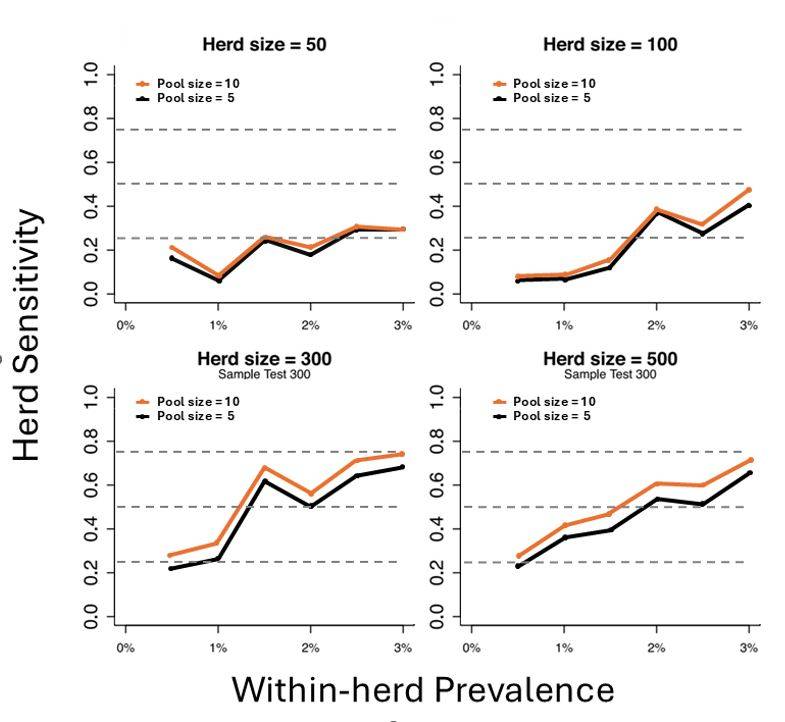Current Johne’s tests have limitations in sensitivity and specificity, especially in early stages of infection. As a result, large sample sizes are needed to determine with confidence whether a herd is free from infection.
Example Testing Thresholds (for 95% Confidence):
- ELISA
- Assumptions: 94% sensitivity, 98% specificity, 6.5% within-herd prevalence
- Minimum animals to test: 126
- Expected false positives: Up to 5
- Note: In herds with ≤125 head, all animals must be tested to achieve equivalent confidence.
- PCR
- Assumptions: 95% sensitivity, 99.5% specificity, 6.5% within-herd prevalence
- Minimum animals to test: 68
- Expected false positives: About 1
Pooled Fecal PCR for Herd-Level Status:
Pooled PCR can be a cost-effective alternative, especially in larger herds or when a low prevalence is suspected. However, pooling samples reduces sensitivity.
- Pooling 5 fecal samples:
- Sensitivity ~67% (McKenna, 2018)
- Sensitivity improves with more positives per pool:
- 1 positive animal: ~62%
- 2 positive animals: ~86%
- 5 positive animals: ~99%
- Recommendation: Pool samples from animals of similar age to increase the likelihood of capturing high shedders (Kalis, 2000).
- Pooling 10 samples:
- Newer evidence (Ly, 2021) shows comparable sensitivity to pools of 5, with significant cost savings (see figure).
Note: Pooling is a herd-level screening tool and is not suitable for certifying individual animals as negative.

Figure 1. Herd-sensitivities reported by Ly et al., 2021(results derived from Fig. 2), calculated for different pool sizes and low prevalence levels for herds of 50, 100, 300, and 500 cattle.

